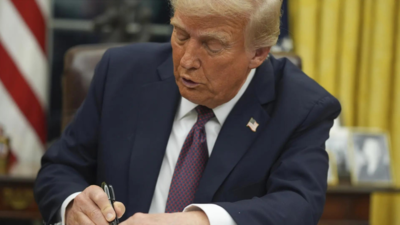After his inauguration on January 20, President Trump initiated extensive immigration management measures that included the end birthright citizenship.
The 47th president of the United States issued a controversial immigration directive that aimed to deny birthright citizenship to children whose parents reside illegally in the United States or have temporary visas.
Historically, the United States administration has consistently interpreted the Constitution as granting automatic citizenship to persons born within the United States, regardless of the immigration status of their parents.
This order is based on the phrase “subject to its jurisdiction” within the 14th Amendment. Several conservative immigration advocates have argued that children of unauthorized immigrants should not qualify for citizenship under the Constitution, as they believe these individuals are not technically “subject to the jurisdiction” of the United States.
The directive ordered federal agencies to stop providing passports, citizenship documentation, and related documents to children born in the United States whose mothers lack legal status and whose fathers are neither citizens nor permanent residents, or to children of mothers with temporary visas (with parents who are not). t citizens or legal permanent residents).
The order, which was not supposed to affect existing cases, is scheduled for implementation in 30 days. However, within hours of its announcement, legal action was launched by the American Civil Liberties Union and several advocacy organizations, which filed a lawsuit challenging the order in federal court.
Legal experts had already expressed doubts to CNN about the viability of such a legal position in the courts. They maintain that the specific provisions were intended for two distinct scenarios: first, addressing cases of descendants of foreign diplomatic personnel who were under the jurisdiction of the United States and, second, handling cases in which foreign forces have occupied parts of US territory through a military invasion.
On his first day in office, President Trump signed a series of executive actions aimed at reversing Biden’s immigration policies. In addition to ending the birthright citizenship order, the measures also included closing the US border to asylum seekers and migrants, immediately stopping the CBP One program that allowed migrants to schedule appointments for legal entry, and declaring a national emergency on the border between the United States and Mexico. edge. This national emergency authorized the redirection of federal funds for the construction of the border wall and the deployment of military personnel.
Trump also issued orders to end the practice of “catch and release,” which allowed migrants to be released into the United States while they awaited court hearings, and suspended refugee resettlement. In a further effort to control immigration, he led a 60-day review to identify countries with inadequate vetting systems for travelers and visa applicants, which could lead to travel bans.
Additionally, Trump designated drug cartels as terrorist organizations, expanding his ability to attack them. He also intended to restore the Policy to remain in Mexicorequiring asylum seekers to wait in Mexico until their immigration hearings in the United States, although Mexico’s cooperation would be necessary for its full implementation.





